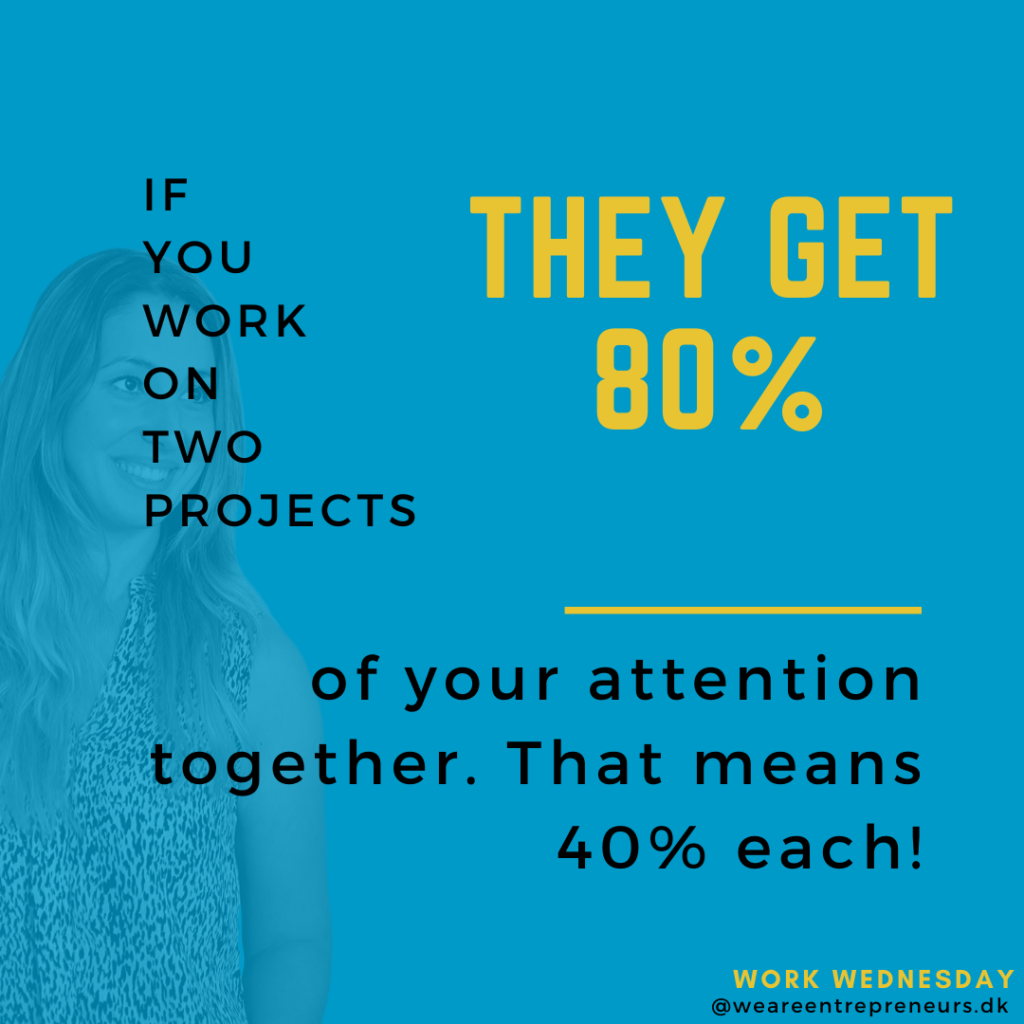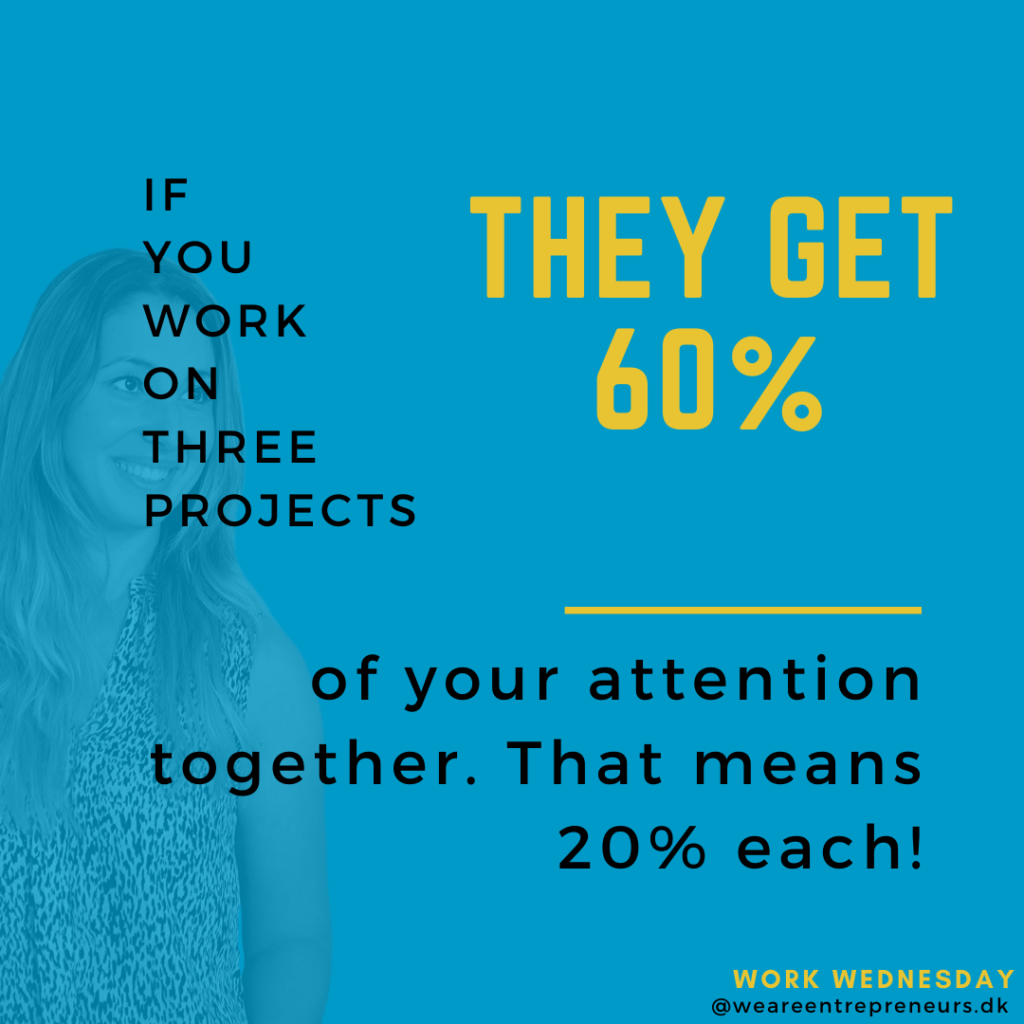Are you busy?
Feeling like you have too much to do and too little time?
Having too many ideas and wanting to do them all?
Are you trying to be productive and it feels like drowning?
What if I told you there was a way you can get everything done on your to-do list, take on other projects and find more fulfillment in the process? It is not sorcery, I promise.
In this article, you will learn why being constantly involved in tasks does not make you productive, how structuring your work with precision will allow you to slow-motion multitask, and what to do today to boost your productivity so you can always deliver excellent without being busy.
NOTE: All the methods and techniques are proven tools that have lead businesses and business people, over many years, to success. Diana has adapted them to be used in our personal lives and she integrated them into her coaching program.
Busy ≠ Productive
Being busy does not only mean you have many things to do, being busy, together with perfectionism, but it is also a procrastination technique that we all use daily. Did you ever say you were busy (to yourself or others) so you can get out of doing something? There you have it, busy is an excuse more times than it is a reality. That being said, I know you genuinely have many things to do, even more than you can handle at times.
Why do I say busy is an excuse when I know you are busy? Well, it’s because much of the busyness we experience is self-inflicted and it can be stopped at any time.
What does BUSY mean?
According to the definition, busy means to have a great deal to do and to keep oneself occupied. It refers to a specific point in time and our involvement in tasks. At no point does it refer to outcomes or results, however, we do use it to imply that because we are busy, we are being productive.
What does PRODUCTIVE mean?
Different sources define productive as the capacity to get results (no matter of which sort) in abundance. It does not refer to a state or a condition we are in, but to our capacity to deliver. To be productive you need a good system in place that will guarantee results by doing what you have to do, without the need of getting overwhelmed or being busy.
Where does your time go?
You want to feel less busy and more productive, and that’s great, but how can you get everything into a structured system and plan ahead when you are constantly playing catch-up?
And that’s the real struggle of being organized and structured, you barely have enough time to get everything done, how can you plan ahead? Do you fee like you don’t have time? Let’s look at where you can get some time from.
The math of time
30 minutes a day watching TV adds up to 3.5 hours at the end of the week and 14 hours at the end of the month.
2 hours and 23 minutes a day on Social Media add up to 16 hours and 41 minutes at the end of the week and 66 hours and 44 minutes at the end of the month.
Even small chunks of time add up to a considerable amount in the big picture. Have a good look at your own habits and see where can you reallocate 30-45 minutes to planning in your day. This will change your focus from busy work to strategically planning where you want to go and free up some of that needed head-space to make better decisions on the way.
The cost of context switching
Wanting to do everything at once is another way our time escapes from us.
Gerald Weinberg showed how when switching our attention from one project to another, we waste time because our brains need time to process that change and get fully active on the next tasks. According to Weinberg, being active in one project allows you to focus on 100%, being active in 2 projects allows you to focus on each 40%, losing 20% of your production capacity. You continue losing 20% for each project that you add to your list, meaning that if you are involved in 4 simultaneous projects, you will only allocate them 10% of your attention each.
In practical terms, this means that if you are planning a birthday party, you can plan it with your full focus. If you plan the birthday party, your summer holidays and a big conference at work, each of those activities will get 20% of your attention. Therefore, you will feel overwhelmed, stressed and probably unhappy with any of the results.
You will not always have a choice when it comes with big projects in your life. Actually, more than once, the big tasks will come all at once. You will get a big opportunity at work when you have to move, you will plan your kids birthday when your boss sends you on a work trip etc. We’ve all been there.
What to do instead
The first thing you can do when you have more than one project is to accept that you will not be able to be everywhere at all times. Accepting that will lower your expectations regarding the results and will make you feel less stressed.
The second thing you can do is to make a plan as soon as possible. This will allow you to foresee the time and resources you will need, as well as the potential roadblocks so you can be pro-active in their solution. It is important to create a workflow around planning and strategic organization, so when you are in a challenging situation you don’t need to implement a new system as well.
The third thing to do is to ask for help. You do not need to do everything ourselves all the time. If you do, you will burn out very quickly. Get some team members in your project team and split the tasks. I know some (most) of the things you need to do them yourself, but I am sure you can find others that you can delegate. Remember your family! They are also your team.
Interruptions
Studies show that people get interrupted on average every 3 minutes by colleagues, telephone ringing or distractions (email buzz, phone notifications, etc.). After every interruption, it takes around 23 minutes to get back to where you were before the interruption and 4 times as long (that’s almost 1 hour) if you start a new task after the interruption. This refers to the deep focus we need to be fully present with a task.
We can not always avoid the distractions and interruptions, but there are measures we can take to minimize their number and/or impact.
Task bundling is one way of minimizing the time to re-focus by doing similar tasks for a longer period of time. This will give you an automation advantage of not having to be constantly present when getting back from an interruption.
Uninterrupted block time is a good way of working on a task that requires your deep focus. Reserve a quiet space, block your calendar and turn off notifications, and allow yourself to immerse in the task for one hour or two. You will get further ahead than in a whole day of work with interruptions.
Planning is key to minimize interruptions because, if done well, it will allow you to bundle tasks and reserve block time, but it will also free head-space needed to focus on the actual work. If you know that your plan is solid, you will not have all the tasks in the back of your head and it will get you faster to the focus point you need.
Can you do everything?
Yes, you can! Listen up, it’s not just me saying it. There is a way of doing everything, and it involves patience and planning. Doing everything at once, or in parallel, or simultaneously is called multi-tasking and together with perfectionism and worrying, are the main ways we procrastinate.
Gerald Weinberg recommends finishing a project before starting another, to make sure you can allocate the maximum amount of resources at all times. While I appreciate the value in it, I never saw it applicable in my life because some projects are simply too long, and waiting to finish them before starting something else did not always make sense. Then I heard Tim Harford’s TED talk where he introduces the concept of slow-motion multitasking. Tim Harford explains how studies show that having multiple stimulating projects is recommendable and highly successful people have been doing it since the beginning of time.
Slow-motion multitasking
The idea behind slow-motion multitasking is that having several projects at the same time, it will take you longer to complete them, but it will stimulate your creativity and help you focus on something productive when you are stuck on one of them Tim explains how Einstein, Darwin and other successful scientists in history were using this technique and how it helped them become successful.
This technique is applicable for long, complex projects like starting a business while writing a book. Those two are time-consuming, long term, energy-demanding projects and you might be tempted to wait with writing a book until the business takes off, or not do it at all. Research shows that it is beneficial to do them both if you are able to space them out from each other a bit. Maybe work on the book on weekends or when you feel stuck in your business journey.
Self-discipline
The key to slow-motion multitasking is patience and delayed gratification. Come to think of it, those are the same things you need in self-discipline.
When I first started studying successful people and how they live an intentional life, I realized that when they are asked what do they think their secret ingredient for success is, they all reply “self-discipline”. Not education, network, money, etc. SELF-DISCIPLINE!
That is because it all starts and ends with you taking control of your life, circumstances and decide what is best for future you in contrast with what you would rather do right now. School success, job promotions, business growth, it is all attributed to careful planning and doing the work with precision and consistency for the promise of a better tomorrow.
Now take a moment and think about your own life. Where can you delay satisfaction today for a bigger success tomorrow? Are you ready to live an intentional life?
Use the proven business methods from the Move Forward program to build an intentional, successful and fulfilled life. Start by booking a free personal coaching session.










